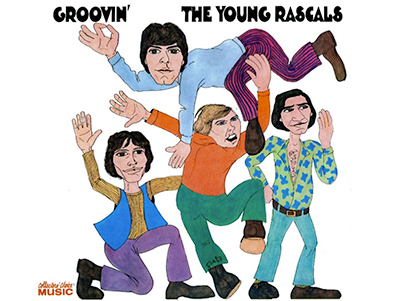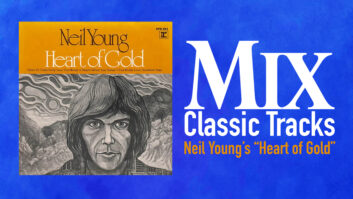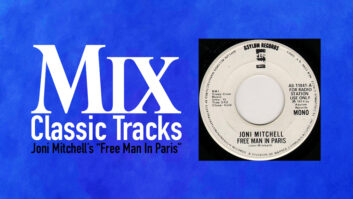
The sounds of chirping birds are a calling card to a song that almost didn’t get released, an opener that offers a perfect imitation performed by brothers Eddie and David Brigati in the days before samples, leaving no doubt to the listener that the classic they are about to hear is “Groovin’” by The Young Rascals, as they were still known, soon to be The Rascals.
Writer/singer/keyboardist Felix Cavaliere remembers those early days as great fun. He laughs as he recalls the Brigati brothers’ studio antics. Eddie was his co-writing partner and other lead singer in the group, and David, Eddie’s older brother, was not in the group but often contributed background vocals on their albums, creating that special familial harmonic blend.
“Those guys could do any animal sounds you could imagine,” Cavaliere recalls. “Half fooling around and half seriously, we would record them doing all these animal sounds. They went out there and they could reproduce birds, elephants, lambs. We had them do a traffic argument once which was…well, I wish I still had that. It was hysterical. We had so much fun in those days. It was a very experimental time.”
Cavaliere says it became his idea to create “a sonic environment” like the Beatles had with the submarine sound in “Yellow Submarine.”
“You’re creating a place for that song to exist,” Cavaliere says. “I mentioned that to Paul McCartney when I saw him after that and he looked at me like I was nuts.”
Nuts or not, Cavaliere says the birds set the scene for the park on a Sunday afternoon, a rarity when musicians have time off to spend with their girlfriends, and from the outset of the birds and the topic, the song struck a chord and soared to the top of the charts in 1967.
“Musicians work on the weekends, Friday and Saturday, which is when ‘normal people’ go out,” Cavaliere says. “So Sunday afternoon became the only time for us to be together, which became the premise for ‘Groovin’ on a Sunday afternoon.’”
Cavaliere says a girl in his life provided the muse for all the songs he wrote back in his early 20s, including the hits “Groovin’,” “I’ve Been Lonely Too Long,” and “How Can I Be Sure.” “‘How Can I Se Sure’ was when we split up,” he explains. “I really believe the reason she was sent into my life was to write this music.”
Back in those days, Cavaliere would write the music and the chorus title, he says, along with the main body of what the song was about.
“Melodically it was all done with a la-la track, and I would try to get across to Ed what we would need to write,” Cavaliere says. “He would send me different lyrics and I would sort them out and put them into the order I wanted. That kinda changed as the years went by, but for ‘Groovin’’ that was the way it was.”
Cavaliere says he handed Brigati the theme for the lyrics because he felt he was better at expressing Cavaliere’s ideas.
“In the beginning it was like big brother/little brother, and he was perfectly content having me go over it like an editor would, but as the years went by, I think he didn’t like that much. But that was the winning arrangement, and if it weren’t for egos, I think we’d still be together,” Cavaliere says.
Groovin’ In the Studio
The recording of “Groovin’” took place at Talentmasters on 42nd Street in Manhattan with Chris Huston at the board. After Huston met David Brigati when he had been a member of Joey Dee and the Starlighters, the elder Brigati recommended him for the engineering job.
“I had only been engineering for just about a year, although somehow I’d managed a hit with Mitch Ryder & the Detroit Wheels—‘Sock It to Me, Baby,’ in 1966, literally within months of first getting behind the console,” Huston recalls. “My first impressions were of Eddie and Felix’s incredible voices and the openness and smoothness of the basic rhythm track as we put it down to establish the feel. It was one of those songs that really evolved as it was recorded.”
Cavaliere remembers the studio as “a box,” but what mattered to them was that James Brown had recorded there.
Cavaliere says he and Atlantic Records’ Arif Mardin mapped out the song before they entered the studio, deciding not to use drums, but instead to have Dino Danelli play conga. Cavaliere’s own instrumentation was undergoing changes. Although he was known for playing key/bass in the early days, that changed around the time of the recording of “Groovin’,” where he decided to concentrate on the piano.
He says Mardin, who was very hands-on, helped him come up with the piano solo that Cavaliere still plays to this day. “We were really in charge. Contractually we were the producers of The Rascals,” Cavaliere says. “[Arif] came in as a supervisor.”
They discovered bassist Chuck Rainey from the Atlantic roster, where Rainey was part of the King Curtis group and had indicated he would like to do sessions.
“We fell in love with him and used him on whatever we could,” Cavaliere says. “That was one of the first songs I remember him making a real contribution. When I blocked out the bass part, I didn’t have all the nuances he put on it. I just had a basic bajon bass beat groove, and he put in all the other things that were magic. I don’t know if people still record like that because I just did an album where we just phoned in our performances from different addresses. There was a real feeling in the room, and that was what Atlantic taught me.”
“These were the days when everything was recorded live, especially the larger session dates, and the job of the recording engineer was to document the performance on tape,” Huston adds. “The musicians—session musicians, that is—were used to playing together, so they were able to work without everyone having phones. I had to mix down from 4-track to 4-track, after the first session as I’d put the original three instruments—congas, keyboards and guitar—on their own tracks and used one for a pilot vocal.”
Cavaliere says the piano miking was very important. Huston says their selection of mics was very limited at the studio. “I used a single microphone on the piano with the lid open. It was a Neumann U 67,” Huston recalls. “The studio was set up for ‘live’ recording—tracking dates. Remember, in those days we were documenting a performance, whereas today, with the advent of Pro Tools, we are creating one.
“Once we started on the vocals, I had to submix one more time,” he continues.” I also ‘ping-ponged’ the background vocals. ‘Ping-ponging,’ as it was sometimes called, between two 4-track machines provided the option of recording the individual instruments of the rhythm section ‘live’ onto separate tracks of one 4-track machine, then submixing them down to one, or more, tracks of a second 4-track machine, leaving the remaining tracks open for vocals and additional instruments such as solos or string and/or horn arrangements. This sub-mixing procedure could go on almost indefinitely, being limited only by the buildup of tape-noise, and perhaps more importantly, by the ability to hold together a cohesive mix while continuously bouncing tracks backward and forward between tape machines. In this case, I ping-ponged the vocals between two tracks of the 4-track machine on the same machine, which really filled them out. In essence I was double-tracking the background vocals to one track of the final 4-track submix. Eddie’s big brother, Davy, helped on the background vocals.”
The background vocals were very specific. Again, wanting to set the scene “like a painter would use colors,” Cavaliere describes the ethereal sound and vocalizations of the Brigati brothers as the color blue: “heavenly,” like sky.
“There’s always something magical about having brothers who sing together like the Bee Gees,” Cavaliere says. “What I was trying to do with the vocals was create a scene with sounds such as voices, such as Hammond organ, such as violin to create that kind of spacey place.”
Right after the vocals enter the song, a harmonica helps create the “lazy afternoon,” a suggestion from Mardin. There was no harmonica player in the group, but Huston had just the guy.
“Michael Weinstein, who played in a band, was helping out in the studio, cleaning up and whatnot,” Huston remembers. “He played harmonica, so I brought him in.”
Huston says the console was “incredibly basic,” consisting of four Ampex MX-10 mixers, four Pultec EQP-1A Equalizers and four Fisher SpaceXpander spring reverbs. He built the patchbay when he first started working at Talentmasters. There were two 4-track machines: an Ampex 350 half-inch 4-track recorder and an Ampex half-inch 351 recorder, which they used to do 4-to-4 mixdowns to open up a couple of extra tracks. Then there was a single Ampex quarter-inch 350 mono machine.
The monitor system consisted of a single Altec 604E powered by a 60-watt Dynaco Dynakit amplifier. As his memory serves, it was a Mark III model. He installed a Bogen P.A. amplifier to handle the headphones when he was working the patchbay, and recalls having only about six pair of headphones back then.
Nearly Shelved
The “lazy afternoon” got the band in a little bit of trouble. After the recording, the battle began. “It was very exciting because the song was so different from anything we had done before,” Cavaliere says. But so different that the label didn’t want to release it. Thanks to New York D.J. Murray the K, who had come to the sessions and had fallen in love with the song, the label took the plunge.
“Murray the K said to us, ‘You guys have a smash hit there, that’s a Number-One hit, I’d play that tomorrow,’” Cavaliere remembers. “But when it went to the record label, Jerry Wexler said, ‘What the hell are you guys doing? You’re a frickin’ rock ’n’ roll band. You’re playing like a cha-cha. There are no drums on it.’ He gave me a really hard time and said, ‘I don’t want to do this shit.’ He used to cuss like a sailor. ‘We can’t put this crap out, you’re supposed to be a rock band. What is this?’”
A visit from Murray the K changed Wexler’s mind and it reached Number One for four weeks, eventually becoming one of The Rock and Roll Hall of Fame’s 500 Songs that Shaped Rock and Roll.







